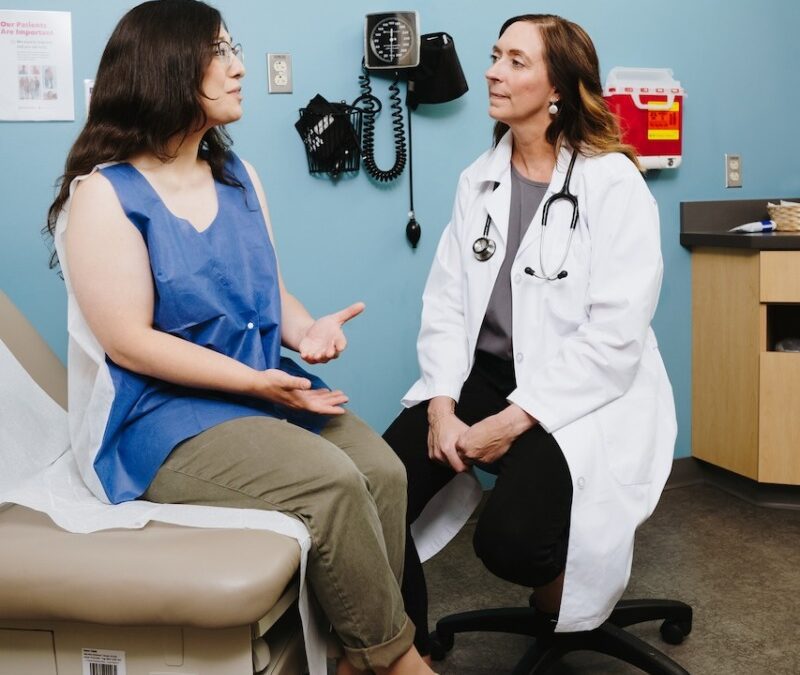
#image_title
Evers ends effort for new statewide rule. Counties questioning legal authority to issue their own.
Gov. Tony Evers’ administration officially withdrew a scope statement Monday that detailed how the state would respond to future surges or hotspots of COVID-19.
The move comes as Republican lawmakers expressed no interest in working with the administration to replace the safer-at-home order knocked down by the state Supreme Court last week.
Consequently, with no statewide emergency plan in place, a patchwork of county-by-county regulations has popped up across the state with some local health officials unclear if they are legally allowed to implement county-level, safer-at-home-style orders.
Despite the fact the State Attorney General has weighed in, confusion persists.
On Friday, Sen. Steve Nass, R-Whitewater, who co-chairs the Joint Committee on Review of Administrative Rules, asked the administration to withdraw the scope statement. That legislative committee has the final vote on whether a new emergency rule becomes law. Submitting a scope statement is the first step in the rule-making process.
With Nass expressing no interest in approving a new emergency rule, any effort by the Democratic administration to create a new law were headed nowhere.
“Republicans made it very clear that they don’t believe a statewide approach is the right way to go at this point in time, and they also don’t believe that any restrictions are advisable at this time,” Evers said Monday. “They rejected our scope statement, so given that, it just doesn’t make any sense to spend a lot of time doing something that we know isn’t going to be successful.”
Nass described Evers’ decision to withdraw the scope statement Monday as “an important development for the citizens of Wisconsin desiring a path forward that recognizes both a need to utilize lawful approaches in protecting the public health and rebuilding our seriously damaged economy.
“I have great faith in the people of Wisconsin making the decisions necessary to fight and defeat Covid-19 without excessive government coercion,” said Nass in a statement.
Evers told reporters Monday that if a surge now occurred, the state would respond by testing people for the virus and providing contact tracers to interview those who tested positive. The state no longer has the ability to issue quarantine orders.
Evers said the state released guidelines for counties to follow Monday and Attorney General Josh Kaul issued a formal opinion Friday that stated safer-at-home orders can legally be issued by local health departments.
Kaul’s opinion came after the Wisconsin Supreme Court Wednesday struck down the statewide safer-at-home order issued by the Evers’ administration.
That night, some counties issued their own orders to keep the struck-down guidelines in place. Yet just as fast as some counties issued orders, some began rescinding them. They cited uncertainty with the law.
Officials with Brown County and Racine County indicated they will not implement a new stay-home order despite Kaul’s formal opinion that such orders by local departments are legal.
Hotspots Brown County and Kenosha County issued and quickly withdrew their own stay-home orders last week after the Supreme Court struck down Safer-at-Home.
The counties, along with other municipalities around the state, cited the Wisconsin Counties Association, which questioned the legality of local orders after the Supreme Court ruling.
“I really don’t see the attorney general’s, what’s being called an opinion, as updated guidance,” said Brown County Corporation Counsel David Hemery in a call with reporters Monday. “I think it is a good summary of what various statutes say, as well as some interpretation from the Supreme Court opinion, but I didn’t find that particularly helpful or hurtful one way or the other.”
As of Monday, Brown County has 2,102 positive cases and 23 deaths.
“The decision by four justices of the supreme court has created massive confusion and chaos around the state. That’s the problem with a decision that departed from past precedent,” said Ryan Nilsesteun, Evers’ chief legal counsel. “We do believe public health officers can and should take steps to protect the people of Wisconsin from this deadly virus and they do have the authority to issue orders.”
The Central Racine County Health Department on Monday reaffirmed its recommendations to follow safety guidelines, rather than issue a county-wide ruling. The department has jurisdiction over the entire county except the City of Racine and the two tiny suburban villages of Elmwood Park and Wind Point.
“It is now incumbent on individual citizens and businesses to make careful and prudent decisions in order to prevent disease transmission and reduce the risk of a resurgence of COVID-19,” said Central Racine County Health Officer Margaret Gesner in a statement.
As of Monday, Racine County has 1,034 positive cases and 18 deaths.
The Brown and Racine county health departments stressed they could still act against hotspots on a case-by-case basis through quarantine or shutdowns, though neither are requiring safety measures specific to coronavirus.
Kenosha County’s spokesman and health department did not respond Monday to a call or email asking if the county would reinstate its order in light of Kaul’s opinion. As of Monday, Kenosha County has 848 positive cases and 18 deaths.
“I think everybody appreciates the difficulty this puts local health officials in,” Nilsestuen said. “Not only are they on the front lines of dealing with this virus but now they are also on the front lines of the legal fight over what, if anything, the state can do to mitigate COVID-19.”
On Monday, the number of positive cases statewide is 12,687, with 459 deaths, according to the state Department of Health Services.
“Our public health reality has not changed,” said DHS Sec. Andrea Palm. “This virus remains very contagious and our data and metrics tell us that we should continue to limit our interactions with others.”
In other news, small businesses across the state are now eligible for $2,500 grants that can be used to assist with the costs of business interruption or for health and safety improvements, wages and salaries, rent, mortgages, and inventory. Businesses will be able to apply for grant assistance in early June through the Wisconsin Economic Development Corp.
The grants are part of a new “We’re All In” initiative announced by Evers Monday. In all, the state will distribute $75 million to small businesses owners, meaning roughly 30,000 small businesses, defined as those with fewer than 20 employees, can apply for the grants.
Grant recipients will become We’re All In businesses by committing to safety protocols and using them in their shops, cafes and places of work to protect their customers, employees, and communities, according to Evers.
The initiate is funded largely by federal dollars received through the Coronavirus Aid, Relief, and Economic Security, or CARES, Act.
“These grants will help businesses in the short term, and we need Wisconsinites to join our long-term economic recovery by supporting those small businesses as patrons and customers,” Evers said. “We know that folks need to feel safe and confident as employees and consumers for this to work, so that is why we need to be all in together.”
Jonathon Sadowski contributed to this report.

Billionaires get richer while Wisconsinites lose access to health care with ‘Beautiful Bill’
The US Senate will examine the Trump budget bill this week. It includes the largest cut to Medicaid in the program's history. It also blocks...

More ways to get birth control in Wisconsin? Sign us up.
The State Assembly has approved a plan to allow pharmacists to prescribe birth control pills and patches. There could soon be another way for women...

Opinion: Pentagon contractors don’t save lives or money – Medicaid does. Don’t cut it.
Cutting life-saving services to further enrich billionaires and Pentagon contractors is the worst possible option. This op-ed was first published on...

Opinion: Modernizing Medicare’s approach to obesity treatment is cost-effective and improves lives
Dr. Roxane Spitzer calls on Sen. Ron Johnson and his Republican colleagues to back the bipartisan initiative to expand Medicare coverage for...




